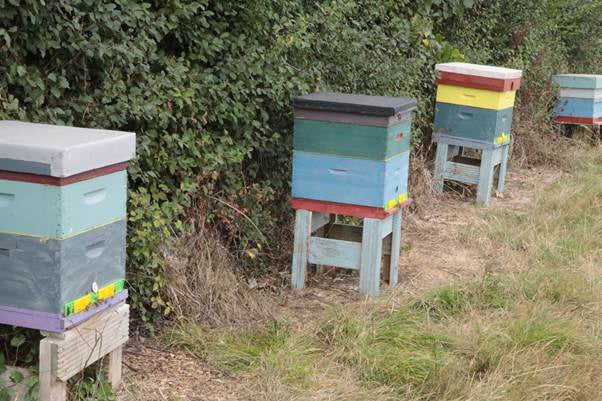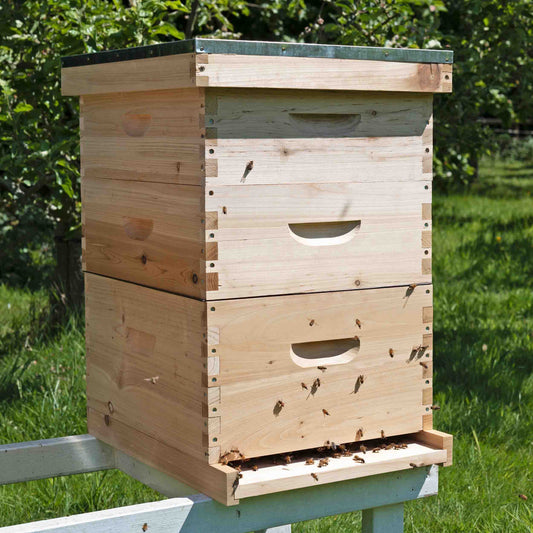
Colourful colonies
That’s it for my beekeeping year: the harvest is in, and the feeders are on the hives, encouraging those queens to lay and the workers to put up stores for the winter. Loads of pollen is coming in, particularly some lovely mauve pollen from lavender.
All my hives have what are called “multi-function crown boards” which I keep on all year round. These things are great—essentially a crown board with an eke on top which creates a useful space above the hive.
Through the summer, they are mainly used for somewhere to dump the brace comb that I have cleaned off frames during inspections. But they can also be used as a division board with an entrance to do a vertical split, or even as a floorboard or roof when creating a split and I have run out of kit.
This time of year, they come into their own as somewhere to securely hold the feeder away from robber bees and wasps. Later in the winter they hold a takeaway tub of fondant and an insulated quilt to stop condensation at the top of the hive.
My beekeeping through the winter consists of the maintenance jobs to have my bees fit and ready for the next honey flow. Whilst there is a long six months before that, one job I try to get on with is reviving the paintwork on all the supers and spare hardware.
I do it now rather than in the dark days of winter, so that I still have time to swap out scruffy hardware from my hives out in the field. It is so much easier to paint them when there is still some warmth in the air and, even better, I can do them outside. My new favourite tool is a cordless paint sprayer; it makes the job so easy.
There is a theory that if you put a scruffy hive, black with mildew, out in a field somewhere, you shouldn’t really be surprised if a woodpecker comes along and anthropomorphically goes, “oh look, a rotten tree with insects inside.” Besides which, I think they look nice—and if the light-fingered brigade are a possible issue there is an opportunity to camouflage.
I also have three different sizes of supers, and to differentiate: Langstroth shallows are painted yellow, my cut comb supers black, and midi supers any other colour which was cheap in the shop. Lastly, for colours, I paint my dedicated clearer boards red so that I can easily see that they are on the hives.
Another maintenance issue is roofs: they can be a real pain and must be robustly waterproof. Roofing felt is horrible, plastic sheet and correx degrade rapidly, and tin roofs are expensive and must be fitted with nails which always seem to want to catch and tear my bee suit.
I now use the canvas material that is used for the sides of curtain lorries—available in lots of colours or a nice safe grey. Lovely to work with, robust and watertight.
Hives ready for winter.


